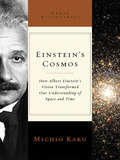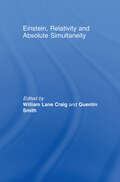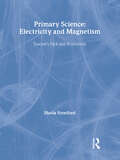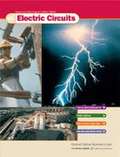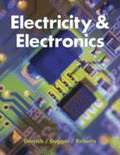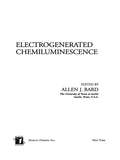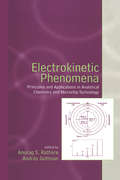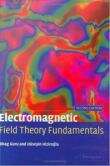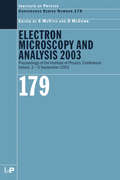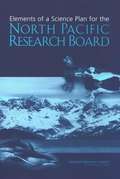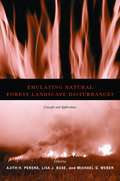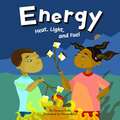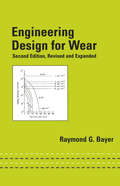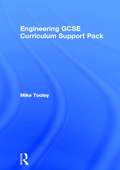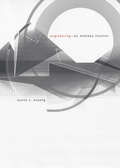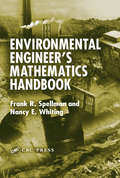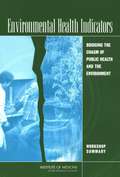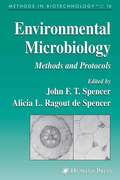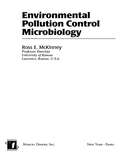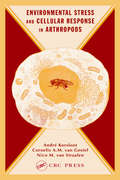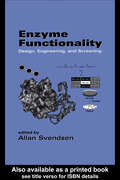- Table View
- List View
Einstein's Cosmos: How Albert Einstein's Vision Transformed Our Understanding of Space and Time (Great Discoveries)
by Michio KakuIn paperback for the centenary of the discovery of relativity, "a fresh and highly visual tour through Einstein's astonishing legacy" (Brian Greene). The year 2005 marks the 100th anniversary of the publication of the paper that launched Einstein's career, made E=mc2 famous, and ushered in a revolution in science--the paper that announced the theory of special relativity. And there's no better short book that explains just what Einstein did than Einstein's Cosmos. Keying Einstein's crucial discoveries to the simple mental images that inspired them, Michio Kaku finds a revealing new way to discuss these ideas, and delivers an appealing and always accessible introduction to Einstein's work.
Einstein, Relativity and Absolute Simultaneity (Routledge Studies in Contemporary Philosophy)
by William Lane Craig Quentin SmithEinstein, Relativity and Absolute Simultaneity is an anthology of original essays by an international team of leading philosophers and physicists who have come together to reassess the contemporary paradigm of the relativistic concept of time. A great deal has changed since 1905 when Einstein proposed his Special Theory of Relativity, and this book offers a fresh reassessment of Special Relativity’s relativistic concept of time in terms of epistemology, metaphysics, and physics.
Elect&Mag Prim Sci: Teacher's Cd-rom Pack For Key Stages 1 And 2
by Fabienne Brochier Mike Diprose Nabeel Nasser Sheila StratfordFirst published in 2004. Routledge is an imprint of Taylor & Francis, an informa company.
Electric Circuits
by National Science Resources CenterElectric Circuits gives 4th and 5th graders an overview of electricity¿how it was discovered, how people put it to work, how it works in living organisms, and what scientists are still learning about it. The book opens with the time-honored story of Benjamin Franklin and his experiments which proved that lightning is a form of electricity. Another story tells of the American inventor Thomas Edison, whose practical application of electricity has helped shape the modern world. One section of this book outlines the path that electricity takes from a power plant to the living room. Finally, the book looks at electricity in nature, from electric eels in the water to lightning in the skies. (Spanish version)
Electricity (Merit Badge Series)
by Boy Scouts of AmericaThis book introduces scouts to the generation of and uses of electricity.
Electricity And Electronics
by Richard M. Roberts Howard H. Gerrish William DuggerTextbook on the fundamentals for technical school students. No bibliography.
Electrochemistry at the Nanoscale
by Patrik Schmuki Sannakaisa VirtanenFor centuries, electrochemistry has played a key role in technologically important areas such as electroplating or corrosion. In recent decades, electrochemical methods are receiving increasing attention in important strongly growing fields of science and technology such as nanosciences (nanoelectrochemistry) and life-sciences (organic and biological electrochemistry). Characterization, modification and understanding of various electrochemical interfaces or electrochemical processes at the nanoscale, has led to a huge increase of the scientific interest in electrochemical mechanisms as well as of application of electrochemical methods in novel technologies. This book presents exciting emerging scientific and technological aspects of the introduction of the nanodimension in electrochemical approaches are presented in 12 chapters/subchapters.
Electrogenerated Chemiluminescence (Monographs In Electroanalytical Chemistry And Electrochemistry Ser.)
by Allen J. BardThe first source on this expanding analytical science, this reference explores advances in the instrumentation, design, and application of techniques with electrogenerated chemiluminescence (ECL), examining the use and impact of ECL-based assays in clinical diagnostics, life science research, environmental testing, food and water evaluation, and th
Electrokinetic Phenomena: Principles and Applications in Analytical Chemistry and Microchip Technology
by Anurag S. Rathore András GuttmanElectrokinetic Phenomena emphasizes the impact of methods such as capillary zone electrophoresis, capillary electrochromatography, and capillary gel electrophoresis on the analysis of biomolecules. This reference reveals the electrokinetic phenomena that underlie high-performance electro-based analytical tools and vividly depicts how electro
Electromagnetic Field Theory Fundamentals
by Bhag Singh Guru Hüseyin R. HiziroğluGuru and Hiziroglu have produced an accessible and user-friendly text on electromagnetics that will appeal to both students and professors teaching this course. This lively book includes many worked examples and problems in every chapter, as well as chapter summaries and background revision material where appropriate. The book introduces undergraduate students to the basic concepts of electrostatic and magnetostatic fields, before moving on to cover Maxwell's equations, propagation, transmission and radiation. Chapters on the Finite Element and Finite Difference method, and a detailed appendix on the Smith chart are additional enhancements. MathCad code for many examples in the book and a comprehensive solutions set are available at www. cambridge. org/0521830168.
Electron Microscopy and Analysis 2003: Proceedings of the Institute of Physics Electron Microscopy and Analysis Group Conference, 3-5 September 2003
by David McComb Stephen MeVitieElectron microscopy is now a mainstay characterization tool for solid state physicists and chemists as well as materials scientists. Containing the proceedings from the Electron Microscopy and Analysis Group (EMAG) conference in September 2003, this volume covers current developments in the field, primarily in the UK. These conferences are biennial
Electronic Structure
by Richard M. MartinThe study of the electronic structure of materials is at a momentous stage, with the emergence of computational methods and theoretical approaches. Many properties of materials can now be determined directly from the fundamental equations for the electrons, providing insights into critical problems in physics, chemistry, and materials science. This book provides a unified exposition of the basic theory and methods of electronic structure, together with instructive examples of practical computational methods and real-world applications. Appropriate for both graduate students and practising scientists, this book describes the approach most widely used today, density functional theory, with emphasis upon understanding the ideas, practical methods and limitations. Many references are provided to original papers, pertinent reviews, and widely available books. Included in each chapter is a short list of the most relevant references and a set of exercises that reveal salient points and challenge the reader.
Elements of a Science Plan for the North Pacific Research Board
by Committee on a Science Plan for the North Pacific Research BoardThe North Pacific Research Board (NPRB) was established in 1997 as custodian to a pool of funds intended for the study of the North Pacific Ocean, Bering Sea, and Arctic Ocean. The success of the NRPB is the development of a high quality, long-range science plan that provides a better understanding of ecosystems and their fisheries in the region. This report provides a framework to help the NPRB identify appropriate science themes and mechanisms for administering and distributing the funds. It contains extensive input from residents of Alaskan communities, to help scientists understand and address issues of importance to the local communities. The book makes specific recommendations on long-term research priorities, the NPRB management structure and the development of future programs.
Emulating Natural Forest Landscape Disturbances: Concepts and Applications (Forest Research Information Paper Ser. #No. 149)
by Lisa J. Buse Michael G. Weber Eds. Perera Ajith H.What is a natural forest disturbance? How well do we understand natural forest disturbances and how might we emulate them in forest management? What role does emulation play in forest management? Representing a range of geographic perspectives from across Canada and the United States, this book looks at the escalating public debate on the viability of natural disturbance emulation for sustaining forest landscapes from the perspective of policymakers, forestry professionals, academics, and conservationists. This book provides a scientific foundation for justifying the use of and a solid framework for examining the ambiguities inherent in emulating natural forest landscape disturbance. It acknowledges the divergent expectations that practitioners face and offers a balanced view of the promises and challenges associated with applying this emerging forest management paradigm.The first section examines foundational concepts, addressing questions of what emulation involves and what ecological reasoning substantiates it. These include a broad overview, a detailed review of emerging forest management paradigms and their global context, and an examination of the ecological premise for emulating natural disturbance. This section also explores the current understanding of natural disturbance regimes, including the two most prevalent in North America: fire and insects. The second section uses case studies from a wide geographical range to address the characterization of natural disturbances and the development of applied templates for their emulation through forest management. The emphasis on fire regimes in this section reflects the greater focus that has traditionally been placed on understanding and managing fire, compared with other forms of disturbance, and utilizes several viewpoints to address the lessons learned from historical disturbance patterns. Reflecting on current thinking in the field, immediate challenges, and potential directions, the final section moves deeper into the issues of practical applications by exploring the expectations for and feasibility of emulating natural disturbance through forest management.
Energy: Heat, Light, and Fuel
by Darlene R. Stille Sheree BoydThe forms of energy discussed include chemical energy, kinetic energy, and solar energy.
Engineering Design for Wear, Revised and Expanded (Mechanical Engineering)
by Raymond G. BayerA modern presentation of approaches to wear design, this significantly revised and expanded second edition offers methods suited for meeting specific wear performance requirements, numerous design studies highlighting strategies for use with different tribological elements and mechanical systems, proven tactics for resolving wear-related problems,
Engineering GCSE Curriculum Support Pack
by Mike TooleyUsed alongside the textbook Engineering GCSE, this pack offers a complete course for the new GCSE syllabuses from Edexcel and OCR, providing all the resources needed by a busy teacher or lecturer as well as a student-centred learning programme that will enable students to gain the skills, knowledge and understanding they require.The photocopiable materials in this pack include:* Background to running a GCSE Engineering course* Worksheets to support and develop work in the textbook* Assignments, practicals and design briefs* Reference material and revision sheets for use as handoutsThis pack builds on the success of Mike Tooley's GNVQ materials, which have helped thousands of students to gain their first engineering qualification.Mike Tooley is Vice Principal at Brooklands College, Surrey, and author of many engineering and electronics books.
Engineering—An Endless Frontier
by Sunny Y. AUYANGGenetic engineering, nanotechnology, astrophysics, particle physics: We live in an engineered world, one where the distinctions between science and engineering, technology and research, are fast disappearing. This book shows how, at the dawn of the twenty-first century, the goals of natural scientists--to discover what was not known--and that of engineers--to create what did not exist--are undergoing an unprecedented convergence. Sunny Y. Auyang ranges widely in demonstrating that engineering today is not only a collaborator with science but its equal. In concise accounts of the emergence of industrial laboratories and chemical and electrical engineering, and in whirlwind histories of the machine tools and automobile industries and the rise of nuclear energy and information technology, her book presents a broad picture of modern engineering: its history, structure, technological achievements, and social responsibilities; its relation to natural science, business administration, and public policies. Auyang uses case studies such as the development of the F-117A Nighthawk and Boeing 777 aircraft, as well as the experiences of engineer-scientists such as Oliver Heaviside, engineer-entrepreneurs such as Henry Ford and Bill Gates, and engineer-managers such as Alfred Sloan and Jack Welch to give readers a clear sense of engineering's essential role in the future of scientific research. Table of Contents: Preface 1. Introduction 2 . Technology Takes Off 2.1 From Practical Art to Technology 2.2 Construction Becomes Mathematical 2.3 Experimenting with Machines 2.4 Science and Chemical Industries 2.5 Power and Communication 3. Engineering for Information 3.1 From Microelectronics to Nanotechnology 3.2 Computer Hardware and Software 3.3 Wireless, Satellites, and the Internet 4. Engineering in Society 4.1 Social Ascent and Images of Engineers 4.2 Partnership in Research and Development 4.3 Contributions to Sectors of the Economy 5. Innovation by Design 5.1 Inventive Thinking in Negative Feedback 5.2 Design Processes in Systems Engineering 5.3 “Working Together� in Aircraft Development 5.4 From Onboard Computers to Door Hinges 6. Sciences of Useful Systems 6.1 Mathematics in Engineering and Science 6.2 Information and Control Theories 6.3 Wind Tunnels and Internet Simulation 6.4 Integrative Materials Engineering 6.5 Biological Engineering Frontiers 7. Leaders Who Are Engineers 7.1 Business Leaders in the Car Industry 7.2 Public Policies and Nuclear Power 7.3 Managing Technological Risks Appendix A. Statistical Profiles of Engineers Appendix B. U.S. Research and Development Notes Index I am impressed by the scope of Engineering - An Endless Frontier, and fascinated by Sunny Auyang's comprehensive knowledge of the subject. This is just the kind of book the National Academy of Engineering has been encouraging to promote the importance of engineering to the public. It will have a long shelf-life in that it pulls together material that is not readily accessible, and will serve as a reference for anyone interested in engineering as a profession. Engineering needs this book!--John Hutchinson, Harvard UniversityEngineering - An Endless Frontier is extraordinary in scope. Sunny Auyang describes the different kinds of contemporary engineering practices and productions, attempts to provide historical background, explains the scientific basis for engineering innovation in different fields, and addresses the broad, systems level managerial, entrepreneurial, and design activities of professionals. It's rare to find a single author who can grasp and explain the essential features of modern technologies across such an array of industrial sectors and engineering disciplines and explain how they work, why they work they way they do,
Environmental Engineer's Mathematics Handbook: Null
by Frank R. Spellman Nancy E. WhitingAdvanced mathematics used in engineering is studied here in this text which examines the relationship between the principles in natural processes and those employed in engineered processes. The text covers principles, practices and the mathematics involved in the design and operation of environmental engineering works. It also presents engineering
Environmental Health Indicators: BRIDGING THE CHASM OF PUBLIC HEALTH AND THE ENVIRONMENT
by Medicine Research Roundtable on Environmental Health SciencesInformation on Environmental Health Indicators
Environmental Microbiology
by John F. Spencer Alicia L. Ragout de SpencerA collection of readily reproducible techniques for determining most of the important factors governing microorganisms and their habitats. Presented in step-by-step detail, these cutting-edge methods range from those for the study of marine organisms, to those for investigating microorganisms occurring in groundwater, to the biodiversity of yeasts found in remote environments. The novel protocols for studying fermented milks are significant for investigators concerned with milk as an item of food for infants, small children, and even adults. Additional methods for the recovery and determination of nucleic acids and other compounds affecting, and affected by, microorganisms are given for certain enzymes produced by plant pathogens and for obtaining microbial species tolerant of such inhibitors as heavy metals.
Environmental Monitoring
by G. Bruce WiersmaThe current rate and scale of environmental change around the world makes the detection and understanding of these changes increasingly urgent. Subsequently, government legislation is focusing on measurable results of environmental programs, requiring researchers to employ effective and efficient methods for acquiring high-quality data. Focusing on pollution issues and impacts resulting from human activities, Environmental Monitoring is the first to bring together the conceptual basis behind the complex and specific approaches to the monitoring of air, water, and land. Coverage includes integrated monitoring at the landscape level, as well as case studies of existing monitoring programs such as the Chesapeake Bay Program. The book also addresses the recent legislative focus on high-quality data results and conducting monitoring programs in different ecosystems and environmental media.
Environmental Pollution Control Microbiology: A Fifty-Year Perspective (Civil And Environmental Engineering Ser. #Vol. 16)
by Ross E. McKinneyCompiling knowledge gained through more than 50 years of experience in environmental engineering technology, this book illustrates the application of fundamental concepts in microbiology to provide a sound basis for the design and operation of various biological systems used in solving environmental challenges in the air, water, and soil. Environme
Environmental Stress and Cellular Response in Arthropods
by Andre Korsloot Cornelis A. van Gestel Nico M. van StraalenWhile the subject of environmental stress in animals is broad, the available information is fragmentary and lacks an up-to-date overview and analysis. Environmental Stress and Cellular Response in Arthropods fills these knowledge gaps. Written by three experts from the same institution, the chapters have a consistency not often found in mult
Enzyme Functionality: Design: Engineering, and Screening
by Allan SvendsenEnzyme Functionality serves as a conduit for trailblazing research in enzyme engineering-relating current understanding of sequence families, the new notion of enzyme structure classes, and modern methods in protein engineering, design, and directed evolution to accelerate the development of novel enzyme functionalities. This reference gathers the
